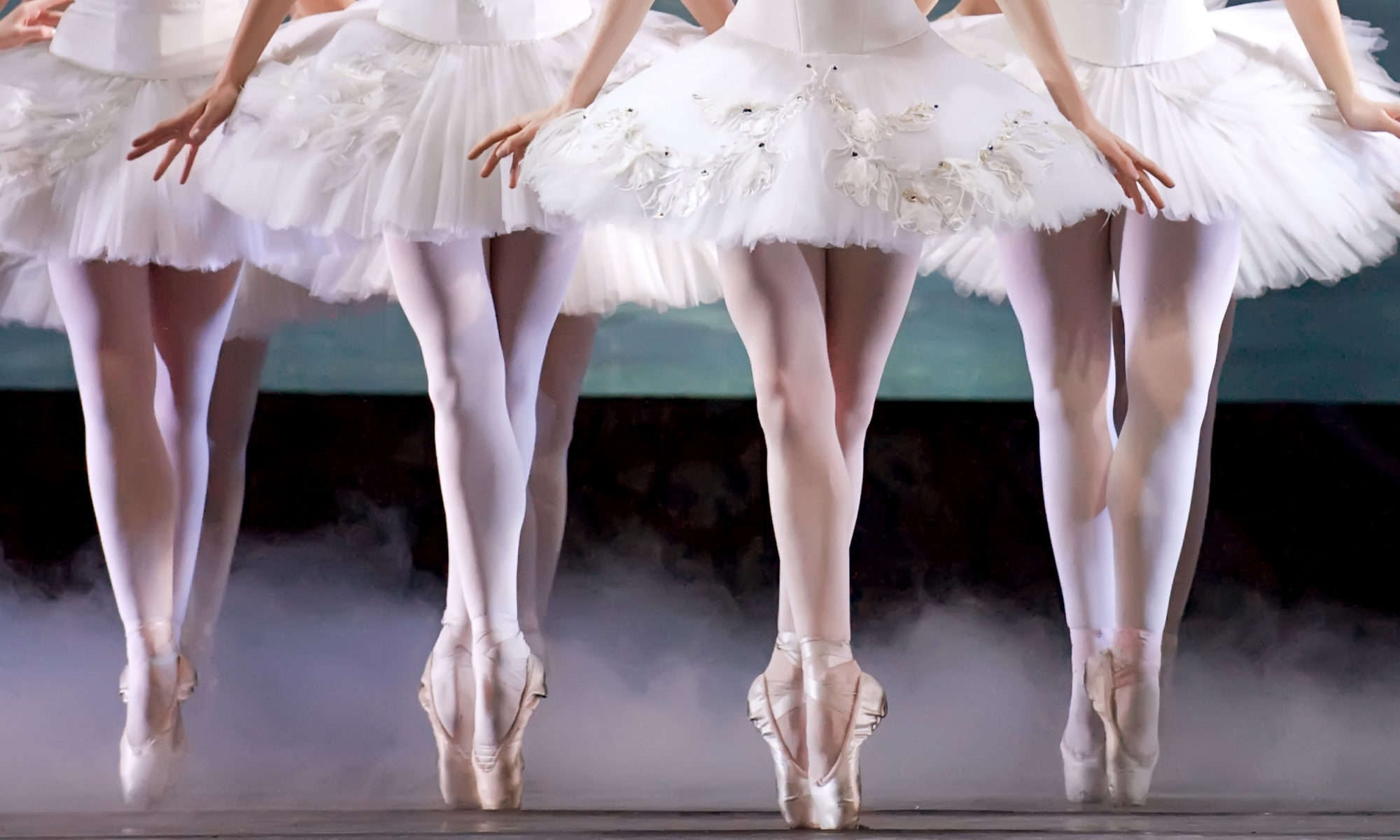SWAN LAKE, ACT II
Enter Upstage Left Cross Hands in front, B+ R foot front
Hold counts 1-3, cou de pied R foot devant on count 4
Enter Upstage Left Cross Hands in front, B+ R foot front
Hold counts 1-3, cou de pied R foot devant on count 4
1.Traveling R change coupé back and front, step R (cou de pied L bk),L(cou de pied R bk), continue for counts 1-8, 1-2 (head to R)
Small grand jeté onto R ouvert (3)-head lowers to look down at R leg),
Pas de bourrée LRL to 5th (4&5)
Relevé passé L to front of knee (6)-head changes to look L
Roll thru on R, lowering L to cou de pied front (7) hold (8)
2.Repeat step 1 to L, R, L (1-16, 1-16, 1-16)
Except last time relevé passé R leg, close R front 5th position plié (7) hold (8)
3.Entrechat quatre relevé passé R leg closing 5th back (head L on passé)(1-2)
Entrechat quatre relevé passé L leg closing 5th back (head R on passé)(3-4)
Four echappé to 2nd closing 5th, head moves L, down, R in half circle) Step travels upstage (5-8)
4.Repeat step 3 three times more (4 times altogether)
5.Chassé relevé 1st arabesque R (1&) Fondu L at cou de pied back (2) small temps levé R
Repeat L (3&4) Repeat 6 times more (8 arabesques altogether)
After last arabesque L, tombé onto R leg croisé devant
6.Traveling back on diagonal upstage Left, small coupé changes like in step 1
Step L cou de pied R front (1) step R cou de pied L back (2) Repeat (34)
Jeté á la seconde L onto diagonal and cou de pied R front (56)
Relevé R leg écarté devant 45˚ (7) Tombé R across (8)
7.Repeat step 6 three times more (4 times altogether)
After last écarté devant, roll thru on left foot and cou de pied R back (no tombé) (8)
8.Pas de chat downstage R on diagonal 15 times (head downstage R) (1-15)
Attitude croisé devant L, in fondu on supporting leg (16)
9.Embôité attitude devant RLRL 45˚ (head front en face)(1-4)
Embôité attitude derrière RLRL 45˚ (head down en bas)(5-8)
10.Repeat step 9 three times more (4 times altogether)
11.Pique L, retiré R to front of knee (traveling stage L)-head tilts L
Tombé R across (head tilts L), Tombé R across (head tilts R) 7 piques in all (1-7)
Attitude devant R leg (8)
12.15 embôités devant traveling downstage, step L on count 16 or pique to 1st arabesque letting go of hands, step onto L and lower to R knee.





